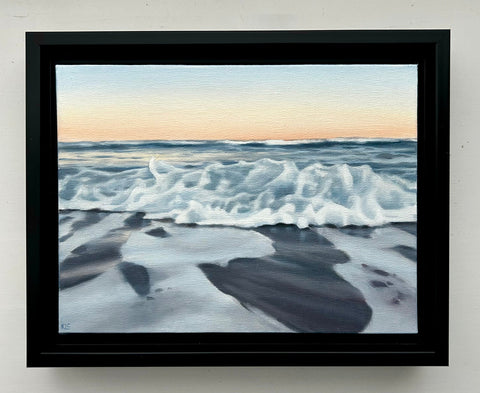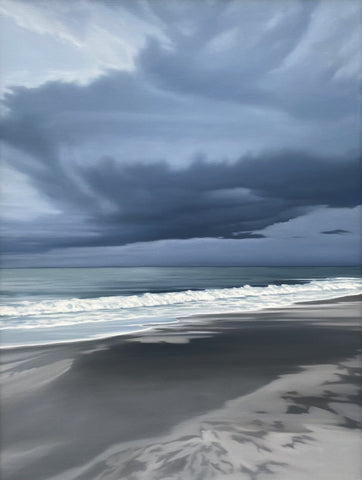What is composition in art? It’s the way multiple elements of an artwork are combined. It can be broken down into eight elements: unity, balance, movement, rhythm, focus, contrast, pattern, and proportion. What’s important is that every artwork has a composition, no matter whether it conveys any meaning or has a defined subject matter. Do you wish to expand your knowledge of composition in art? Then we invite you to read this article!
Composition in Art: Definition
Composition, often referred to as design, visual ordering, or formal structure, is the way formal elements of an artwork are put together to compose the whole piece. It is critical, as a poor composition may make even the finest painting or sculpture mediocre.
Many definitions of composition state that it may be called a form. Yet, here, you have to remember that form in art has a completely different meaning – it is among the formal elements of an artwork, meaning that composition is not the form itself but rather the way form, along with lines, color, etc., is organized within a piece.
 On the Surface- 6" x 8" oil on canvas - KC Collins
On the Surface- 6" x 8" oil on canvas - KC Collins
What Are the Elements of Composition in Art?
It is possible to underline the main elements of composition in art (again, don’t mistake them for the formal elements). These include:
Unity
This element, or rather feature, refers to the way all the elements of a composition belong together. The unity is poor if any fragments of a painting or sculpture feel awkward or out of place.
Balance
One of the main uses of geometry in art is for symmetry, and balance may also be based on it. A balanced painting can be:
- symmetrical – with the same amount of “heavy” and “light” elements on both sides,
- asymmetrical – leaning more to one side,
- radial – symmetrical, but balanced around a central point.
As humans, we seek balance; therefore, an unbalanced artwork might create a feeling of uneasiness, tension, and apprehension.
Movement
Movement is also a part of the composition, as its sense can be created in various ways, including the placement of objects in relation to each other. If you clutter objects on a painting, the artwork will feel as if there is not enough space, but if you put the objects apart, they might evoke the feeling of moving away from each other and build dynamism.
Other ways of creating a sense of movement include the use of the right colors, certain lines (e.g., leading lines from photography), or even utilizing certain shapes.
Rhythm
Like music, visual arts have a rhythm. It is created by combining patterns with repetition. Thus, some examples of rhythmic composition might include paintings with repeated colors and large, underlying shapes. But remember that the rhythm might even be created with the use of empty space.
Focus
When we write an article, we bold certain fragments to attract attention. The same can be said about artwork.
What is the focus of composition in art? It’s the element that attracts the viewer's attention, the focal point in painting that keeps the viewer attracted and engaged.
Contrast
Contrast may be little or significant, and can be created in various ways. For example, you can contrast dark and light colors, but you might also do so with differences in shape, size, texture, or even the type of line and brushstrokes.
Pattern
While we mentioned pattern in our definition of rhythm in artistic composition, it is a separate element of it as well.
Proportion
Proportion is also important, especially when considering the formal form. This element of composition focuses on the relationship between the elements in terms of size.
What Are the Rules of Composition in Art?
In general, you should follow the elements (and principles at the same time) mentioned above. It is believed that maintaining unity, balance, movement, rhythm, focus, contrast, pattern, and proportion is the key to creating a proper composition. But, is it really so?
With the introduction of abstract art in the 19th and 20th centuries, many artists decided to break these conventions, and completely disregard the principles of artistic composition. They worked on the painting overall, rather than dividing it into four parts (top, bottom, left right) or circling around a focal point. Their pieces still became popular and were intriguing, which proves that there is no universal way to focus on your composition. Yet, we should also remember that most of the artists didn’t give up on all the principles but rather did not follow certain ones (e.g., balance).
 Winter Shore- 36" x 48" oil on canvas
Winter Shore- 36" x 48" oil on canvas
The Takeaway
So, what is composition in art? It is the way objects in an artwork are mixed together to create the artwork. Composition may focus on the way objects are placed, but also the way they look or the effect they have on the viewer. Therefore, it is good to introduce the 8 elements of composition, but you don’t necessarily need to follow all of them.
You might also read: What is Contemporary Art? Definition and Examples
